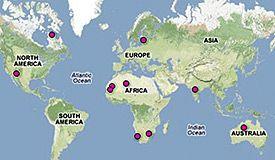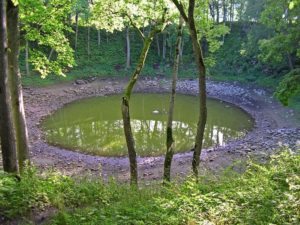Impact craters 🢔 Geological wonders 🢔 Categories of wonders
Wonder
Kaali Crater
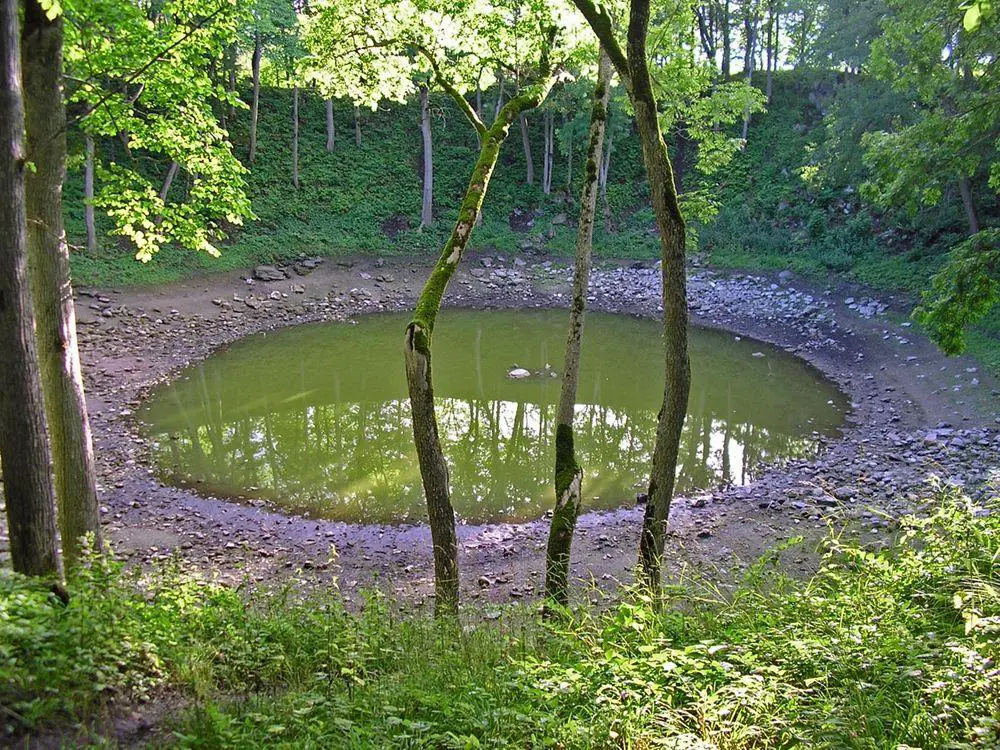
 In short
In short
One of the most recent impact craters on Earth is Kaali Crater in Estonia. This large crater formed some 4 – 7.6 thousand years ago and this could be the only large impact crater which formed in a populated area.
 46.6%
46.6%
GPS coordinates
Name in Estonian
Diameter
Depth
Age
Map of the site
If you see this after your page is loaded completely, leafletJS files are missing.
 In detail
In detail
Volcanic crater, sinkhole or… impact crater?
The unusual, round lake in the central part of Saaremaa was well known to local people. Initially scientists thought that this is volcanic crater or sinkhole, formed by a collapse of large cave.
Geologist Ivan Reinvald (1878 – 1941) was sent to explore this natural feature in 1927. He was not sure at all that this is a sinkhole or volcanic crater – Reinvald considered that it was formed by a meteorite. In 1935 he found small pieces of a meteorite but in 1937 – two smaller craters nearby. Thus it was proved that Kaali Crater is formed by meteorite.
Today Kaali Crater is recognized as one of the most outstanding geological landmarks in Estonia. There has been established a specially protected area (50 ha), near the crater, has been constructed a visitor center.
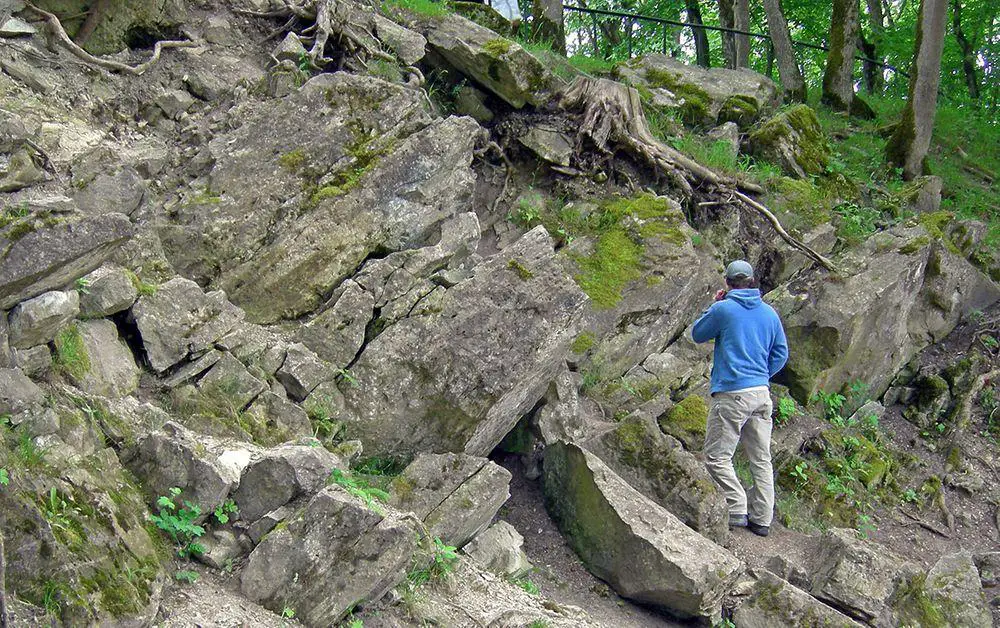
Attack from the space
This crater is like a large scar amidst the idyllic rural landscape of Saaremaa and tells about the terrible events which happened here in Bronze Age.
Different methods of dating show different results – but currently most specialists agree that catastroph happened more than 4 000 years ago, possibly – 7 600 years ago, at 5 600 BC. Most likely Saaremaa and surrounding lands were inhabited in these times.
The everyday life of those people changed (or ceased) dramatically in a fraction of second.
Some 400 – 1 000 tons heavy meteor entered the atmosphere of Earth with a speed of 15 – 45 km/s. It was not like meteors of action movies, which seem to be as slow as airplanes before landing. This real meteor would seem lightning fast to human eye.
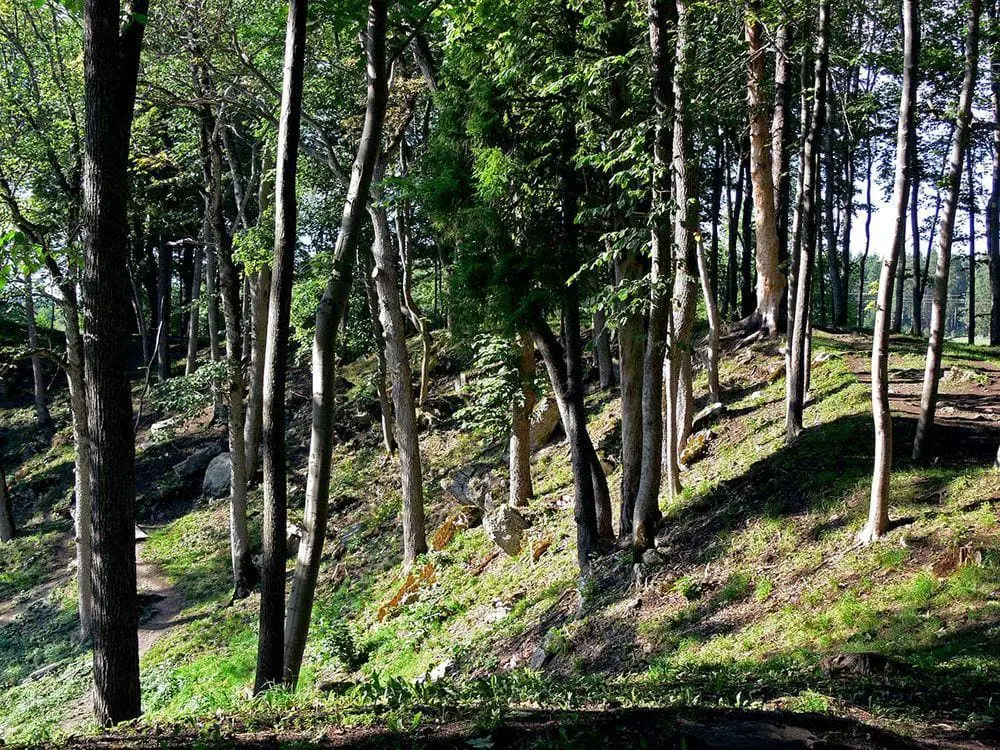
Atmosphere almost immediately heated this stone mass, it started to slow down and evaporate. At the height of some 5 – 10 km metor divided into smaller pieces and after a fraction of second these pieces hit the central part of Saaremaa from the north-east, at the angle of 45° and with a speed of 10 – 20 km/s. It was like a giant bullet with a diameter of some meters but: some 10 – 25 times faster than bullet!
The largest piece, which created Kaali Crater, was approximately 20 – 80 tons heavy.
The effect of this cataclysm could be compared to the effect of the nuclear blast.
Geological consequences
Overheated meteorite penetrated the dolomite layers and exploded. The giant mass of meteorite was vaporized – the largest piece found thus far does not reach 40 grams. Small pieces of meteorite can be found now in Saaremaa, Muhu island, and Western Estonia, glassy spherules have been found in the bogs of Western Estonia, in a layer which formed some 7,600 BC.
The force of the largest meteorite fractured the Silurian dolomite into small pieces up to the depth of 40 – 50 meters. Some 110 m wide and approximately 25 m deep crater was formed, with a 3 – 7 m high rim of debris around it. Approximately 81 000 m³ of dolomite were ejected from the crater, forming some 7 – 8 km high, extremely hot gas flow.
Other pieces of meteorite formed smaller craters, with 12 – 40 m diameter, 1 – 4 m deep. Thus far have been found nine craters, all within a distance of 1 km from the main crater. Most likely there were many smaller craters, but these have disappeared now.
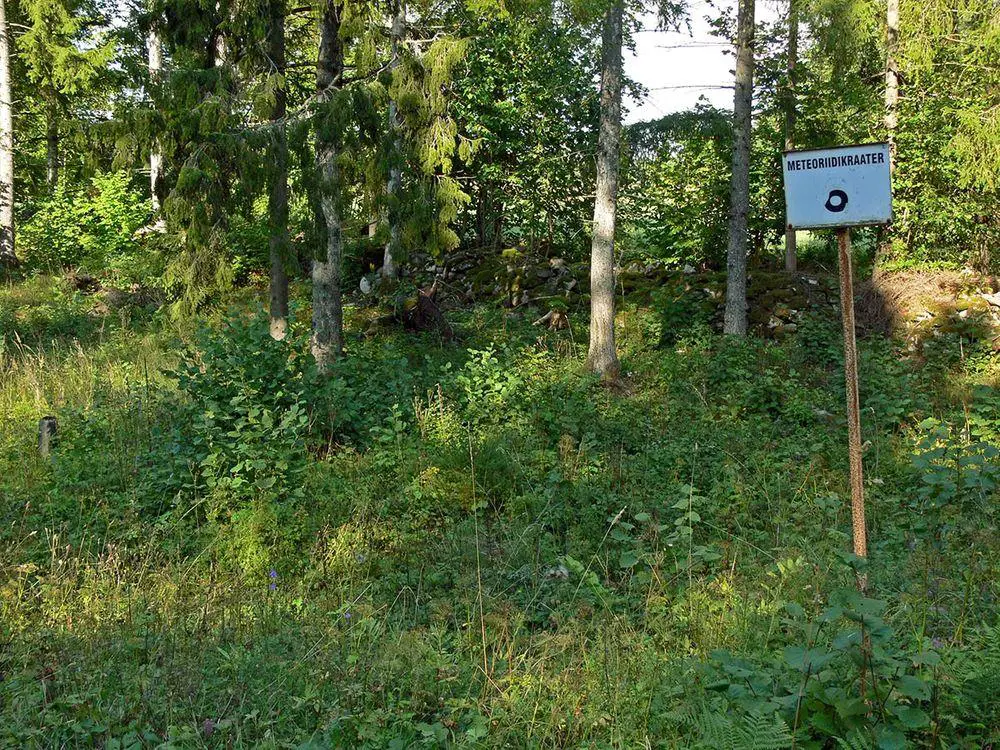
Saaremaa and nearby areas experienced significant earthquakes but extreme heat scorched everything in a distance of some 6 kilometers.
Today Kaali Crater has a lake in it – this lake has a diameter of 30 – 60 m and depth of 1 – 6 m, depending on the time of year. Lake is fed by groundwater and precipitation. The crater is 16 m deep now (not counting the rims of debris), the lake has up to 6 m thick sediments. Upturned blocks of dolomite can be seen in the walls of the crater.
Historical consequences
Most likely people died in this unexpected catastrophe. The life of survivors was never the same again – we can only try to imagine how the prehistoric people were constantly waiting for the next terrible hit from the sky. Such catastrophes cannot be easily forgotten, people remembered these events for many generations and gradually these historical events turned into mythological events.
The crater and its surroundings were unbearably hot initially. Gradually it cooled down but this scar of Earth most likely was taboo to local people for some centuries. Kaali Crater got a very special status – it became a cult site.
In the early Iron Age there was built a dry stone wall around the crater. This wall was 470 m long, approximately 2 m high. It is well possible that it concealed some covert activities from the common people, although the purpose of this wall is not entirely clear.
In the sediments of Kaali Lake has been found a silver collar and bracelet from around the 3rd – 5th century AD. Many bones of domesticated animals have been found as well – animals were sacrificed here even in the 17th century. Further research in the sediments of Kaali Lake could bring more discoveries.
Estonian, Finnish and Scandinavian folklore includes some tales, which could be linked to this prehistoric event. It is possible that even Greek folklore tells about it: the story of Phaeton – the son of Sun god Helios could be based on the narrative about this cataclysm.
References
- The Kaali meteorite craters. Saaremaa, Island of Baltic Sea. Accessed in the 22nd November 2012.
- Anto Raukas, Kustav-Olimar Laigna. Height of the turbulent gas flow and transport distance of glassy spherules on the example of the Kaali impact, Estonia. Proceedings of the Estonian Academy of Sciences. Geology. September 2005.
Kaali Crater is included in the following articles:
 Linked articles
Linked articles
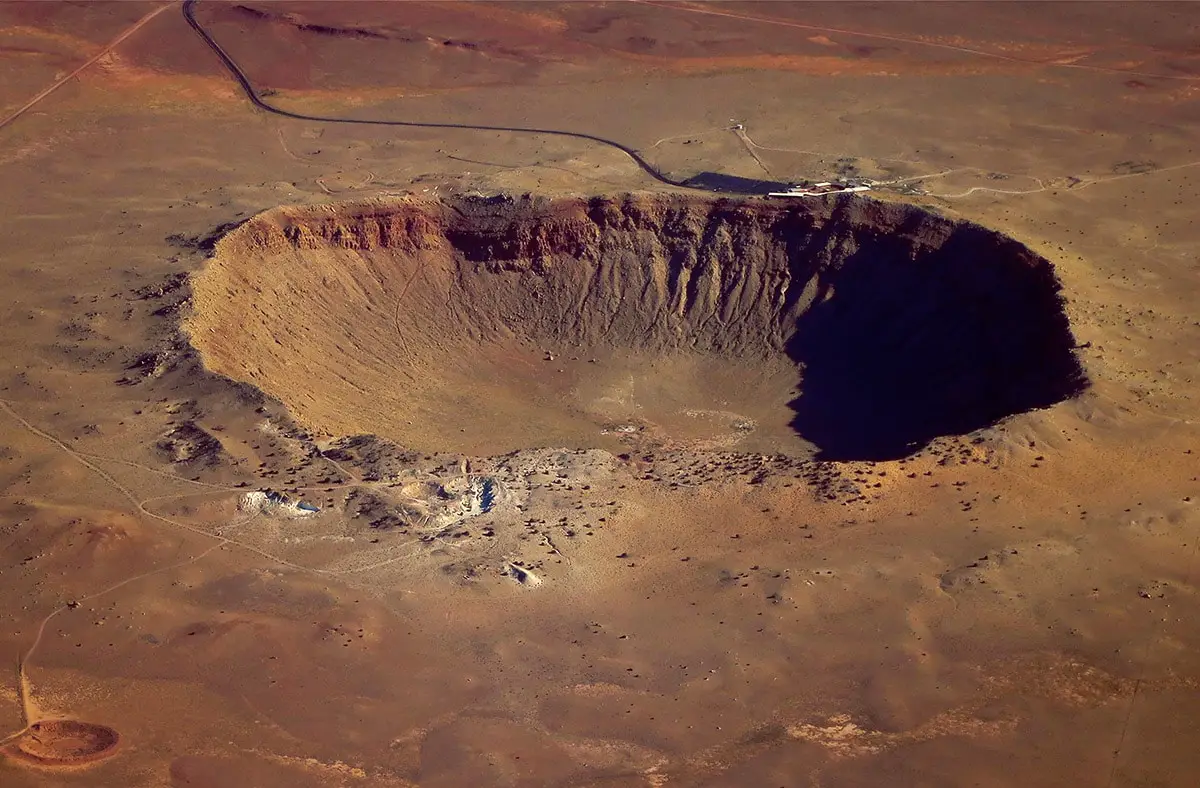
Impact craters
There are many pieces of solid matter flying around in space. And VERY frequently they fall on the surface of the Earth. There are estimates that every year on Earth fall 18,000 – 84,000 meteorites larger than 10 grams: e.g. one meteorite every 6 – 30 minutes.
This category includes outstanding impact craters – detectable scars on the surface of Earth left by a body coming from outer space. The category includes also meteorites – natural objects from outer space.
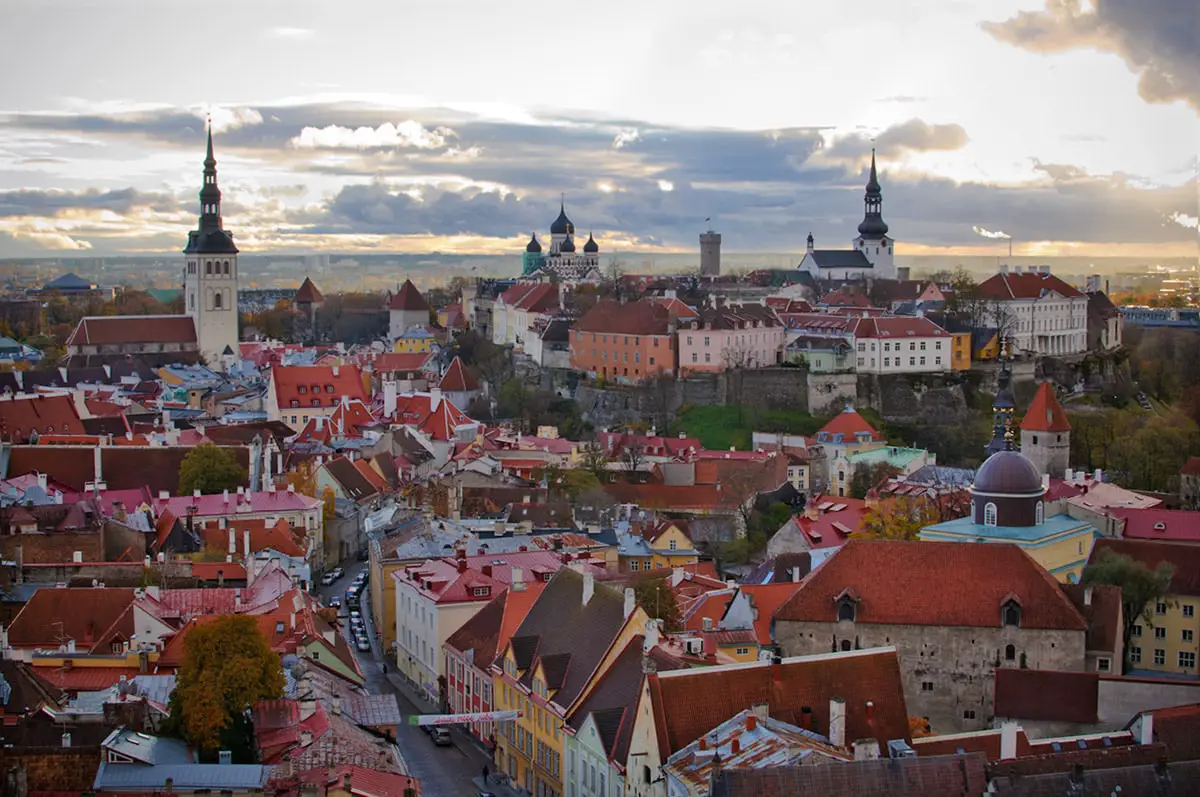
Wonders of Estonia
In spite of its small size Estonia offers a wide array of very interesting natural and man-made landmarks. Highlights of Estonia are:
- Medieval Tallinn – one of the most amazing historical cities in this part of the world, built on and around a tall limestone cliff.
- Medieval castles and churches – Christianity came here with fortified stone buildings – castles and churches. In Estonia are located some of the most impressive palaces in this part of Europe.
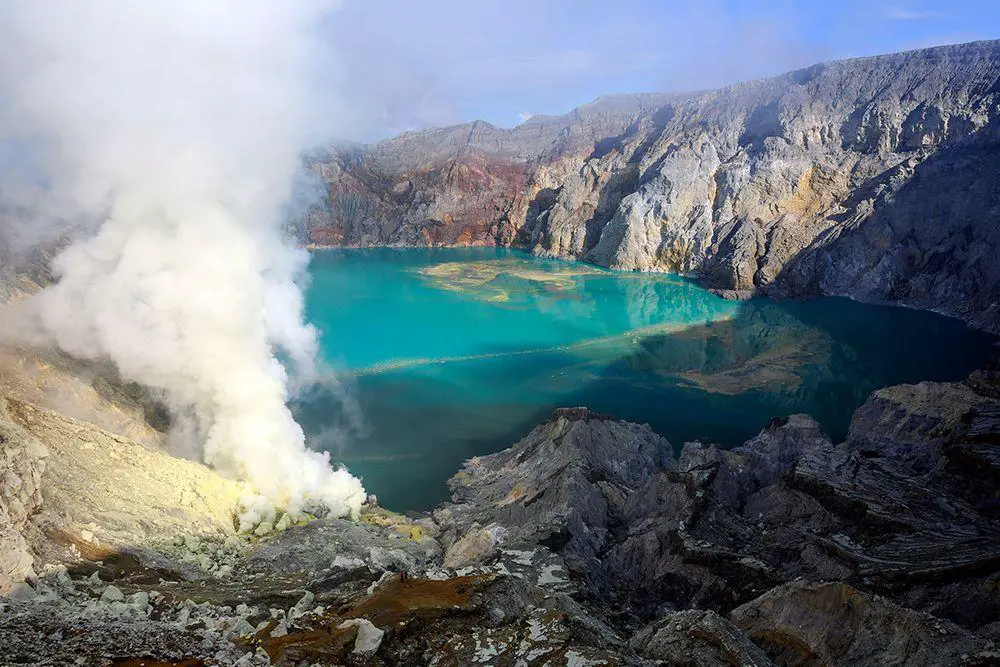
Lakes and streams
There are many factors that can make lakes, sea bays, or rivers unusual. Some lakes have unusual chemical properties and even do not contain water at all – such as lava lakes. Others may have unusual animals living in them or… legends about such animals.

